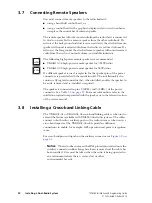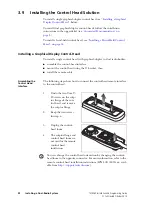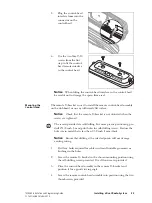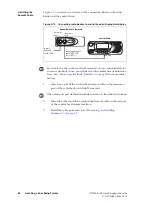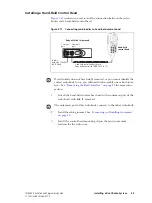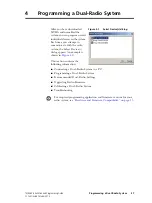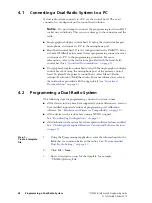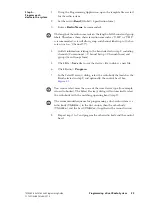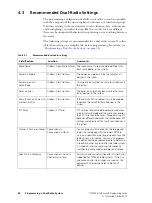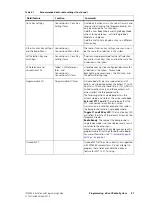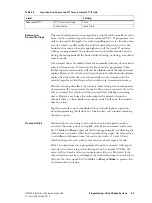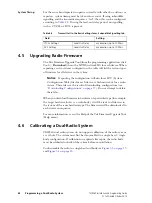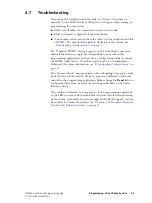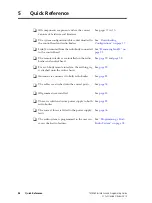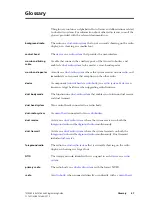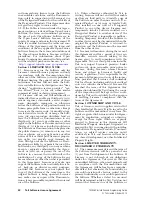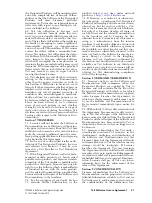
TM8260 Installation and Programming Guide
Programming a Dual-Radio System
43
© Tait Limited
October 2014
Receive and
Transmit Settings
The cross-band repeater receives signals based on the radio’s squelch (carrier)
mute, and re-transmits signals based on external PTT 1. If programmed to
only re-transmit valid signals, the radio’s signalling mutes are also taken into
account, which are affected by the radio’s monitor function (such as the
hookswitch monitor when the microphone is off the hook). If monitor
settings are programmed, the radio user must not enable monitor (such as
having the microphone off the hook) while entering, or during, cross-band
repeater mode.
The transmit timer, if enabled, limits the maximum duration of cross-band
repeater transmissions. If a transmit lockout period is programmed then
further repeater transmissions will also be inhibited until the lockout timer
expires. However, if a valid received signal is present when the lockout timer
expires then the radio does not automatically resume transmission.The
received signal must first drop and return before re-transmission resumes.
Priority scanning also affects the transmit timer during cross-band repeater
transmissions. If a non-priority channel in the group is captured, the radio
will re-transmit that activity and the transmit timer will begin counting
down. However, each time the radio samples the priority channel or
channels there is a brief break in reception, which will cause the transmit
timer to restart.
Squelch override is not compatible with cross-band repeater operation.
Avoid programming this feature to a function key, and consider removing
the menu option.
Transmit Inhibit
If both radios are receiving activity when cross-band repeater mode is
activated, the radio system can rapidly cycle between transmit and receive.
Set Tx Inhibit to
Busy
to prevent this from happening by not allowing the
radio system to transmit when there is another busy signal. An alternative is
to set different debounce times for each radio (such as 10 and 100 ms),
which will separate each radio’s entry into cross-band repeater mode.
If the cross-band repeater is programmed to only re-transmit valid signals,
and one radio is receiving an invalid signal (such as invalid CTCSS), the
mute will stay closed and no re-transmission will occur. However, if the
other radio then receives a valid signal, the radio will attempt to re-broadcast
this over the other signal. Set Tx Inhibit to
Busy
or
Mute
to prevent this
re-transmission occurring.
Table 4.4
Cross-band settings in the PTT form, External PTT (1) tab
Field
Setting
Advanced EPTT1
PTT Transmission Type
Voice
Audio Source
Audio Tap In


